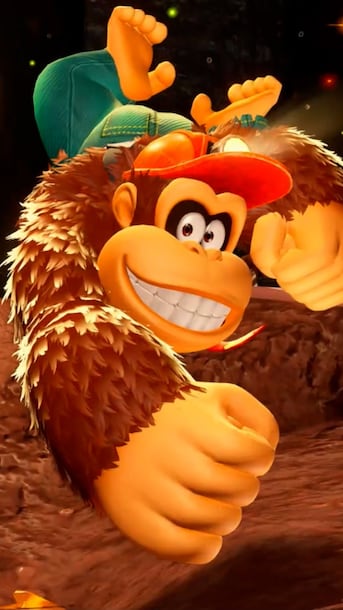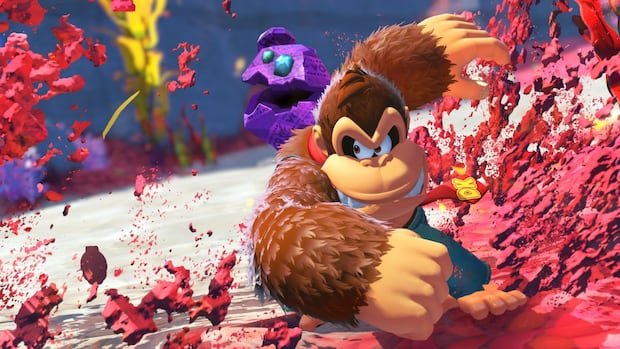
Donkey Kong Bananza feels like an unintentional conduit for this generation’s societal frustrations.
You aren’t playing as Mario, who gleefully jumps and bounces around the Mushroom Kingdom while shouting “wahoo.”
You are Donkey Kong, a 500-pound gorilla with massive arms punching, pounding and smashing his way through unknown lands in a world threatening to crush you beneath its oppressive weight.
It’s the video game equivalent of an anger room, a place full of breakable objects begging to be demolished, as you walk inside carrying a sledgehammer and wearing a pair of protective goggles.
Paired with the puzzle-platforming DNA that makes the Mario games instant classics and a vibrant visual style all its own, Bananza rockets past Mario Kart World as the new Switch 2’s must-have game — even as it struggles with glaring technical problems.
WATCH | Donkey Kong Bananza overview trailer:
The story, thin as it might be at first, is enough to set the stakes for the theme park-like adventure through over a dozen colourful environments.
Donkey Kong is working at a mine staffed by other monkeys when they find banandium gems, giant edible (at least by D.K.) golden bananas. Soon after we encounter the Void Company, who are bent on reaching the planet’s core for unknown reasons, causing havoc along the way — and Pauline, a young girl with magical singing abilities.
The main villain and eponymous head of the company is Void Kong, who also happens to be a corrupt businessman with wildly styled hair. Void Kong is obsessed with golden bananas, insists everyone call him “the president” and angrily says his underlings are “fired” whenever they fail.
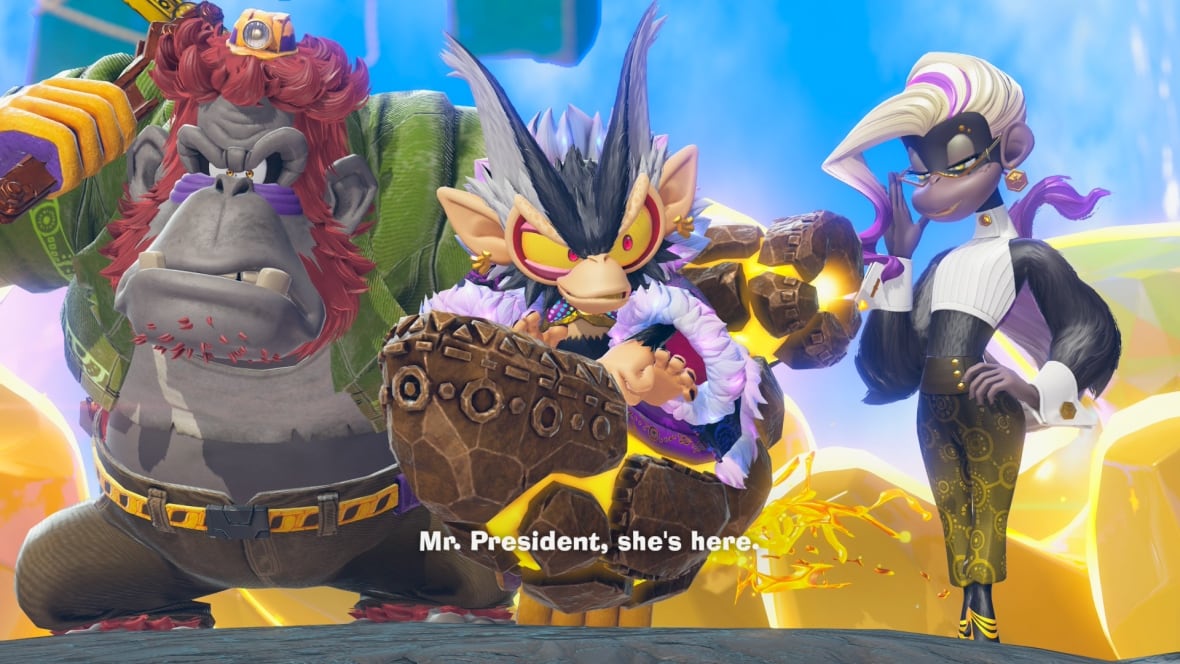
Nintendo is not the kind of company to deliberately pull from the latest headlines for inspiration. But, even accidentally, Void Kong is the perfect antagonist for a video game in 2025 that encourages players to work out their frustrations by shattering everything in front of them.
The young Pauline, meanwhile, rides on D.K.’s back, guiding the player along the way, as she’s the only character to speak (and sing) in a human language.
Longtime players might scratch their heads at her inclusion — in the 1981 original Donkey Kong game, Mario had to rescue a grown-up Pauline from D.K.’s then-villainous clutches; she later appears as the mayor in Mario Odyssey. It’s best not to think about the timeline implications, as Nintendo remixes their mythologies as they see fit across most of their franchises.
More importantly, the loveable big goof and savvy youngster formula infuses the game with heart and humanity even though it feels like it cribbed too much from Wreck It Ralph’s notes to look completely original.
All about destruction
In a developer interview conducted and posted by Nintendo, producer Kenta Motokura said the principle concept behind the game was destruction.
On the surface, nearly everything is built around Donkey Kong’s destructive capabilities. Besides moving around and jumping — classic video game’s basic alphabet — three buttons are dedicated to causing havoc: punching forward, punching up, and punching down.
Other abilities further your devastation: tearing off chunks of terrain, swinging said chunks to destroy enemies and obstacles, or surfing on the chunks to rocket you through the underworld.
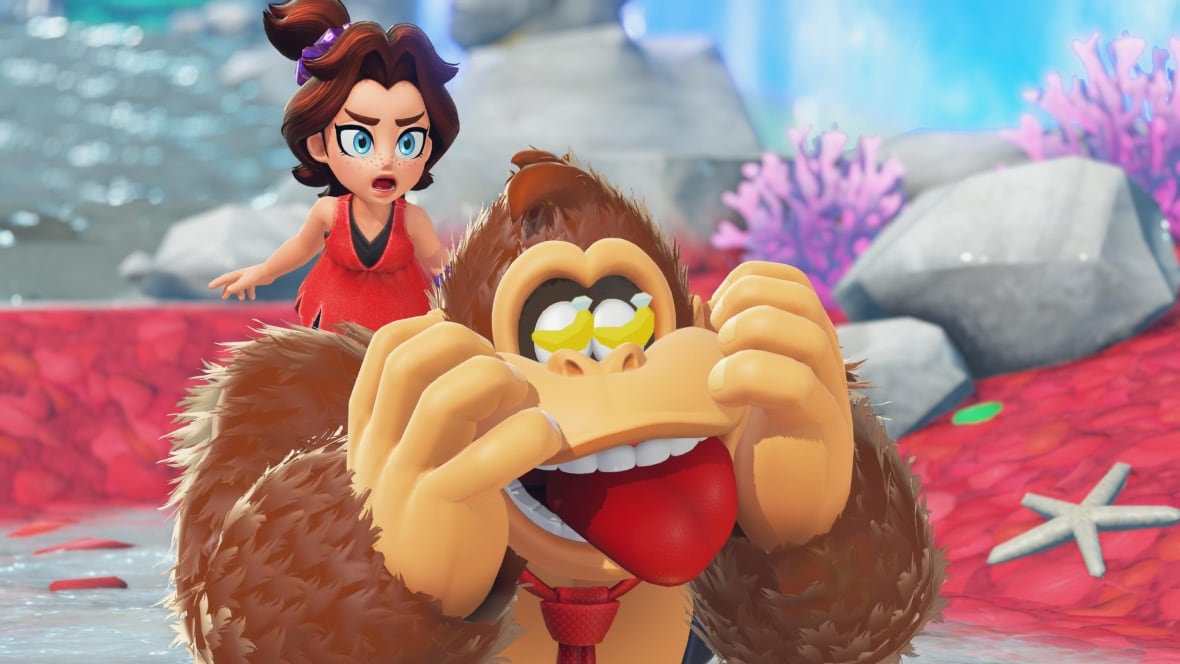
It’s an upheaval of the usual video game logic, where the environment is usually locked, except for the elements the player is supposed to overcome. You wouldn’t break through a rock wall in a Zelda game unless there was already a treasure chest hidden behind, for example.
In Bananza, those rules are usually thrown out the window. You can level entire mountains to rubble with your fists whether there’s something to find or not.
Often times you’ll be rewarded by finding a banandium gem along the way; much like Mario Odyssey’s hundreds of hidden Moons, they are meant to be found in abundance. But if you want to simply let loose and destroy everything around you, without any pretence of treasure hunting, the level’s malleable geometry is happy to oblige.
Serious frame rate problems
All that destruction appears to have pushed even the new Switch 2 hardware to its limits, however. When playing the game while connected to the TV, the frame rate can slow to a crawl, or stutter inconsistently.
It most often happens when hundreds of shards of glass, rock and mud fly across the screen at once, but can mar the experience even in calmer moments. Some of the later boss battles, with particle effects covering the screen, can make it feel as though you’re trying to walk underwater.
It appears to only be a problem when docked to a TV, however, as the game ran at a smooth 60 frames per second without a hitch when playing in handheld mode.
One of Nintendo’s oldest and most beloved characters is back in Donkey Kong Bananza for the Switch 2. We took the game out for a spin ahead of its release on July 17.
The destruction motif doesn’t limit Bananza’s developers when it comes to level design, however. Devious puzzles and inventive enemies will constantly put players on their toes in ways that the House of Mario has perfected over decades.
The best examples juggle pinpoint platforming with different terrain’s properties; throwing an enemy made of ice will cool nearby lava, making it traversable; parasites that ooze corrosive slime can be neutralized by dumping piles of salt-rich sand onto them.
All of this is tied together with the vibrant, surrealistic visual and environmental design. Typical video game biomes are given a slight twist, like adding chocolate and vanilla ice cream-shaped landscapes in an ice world.
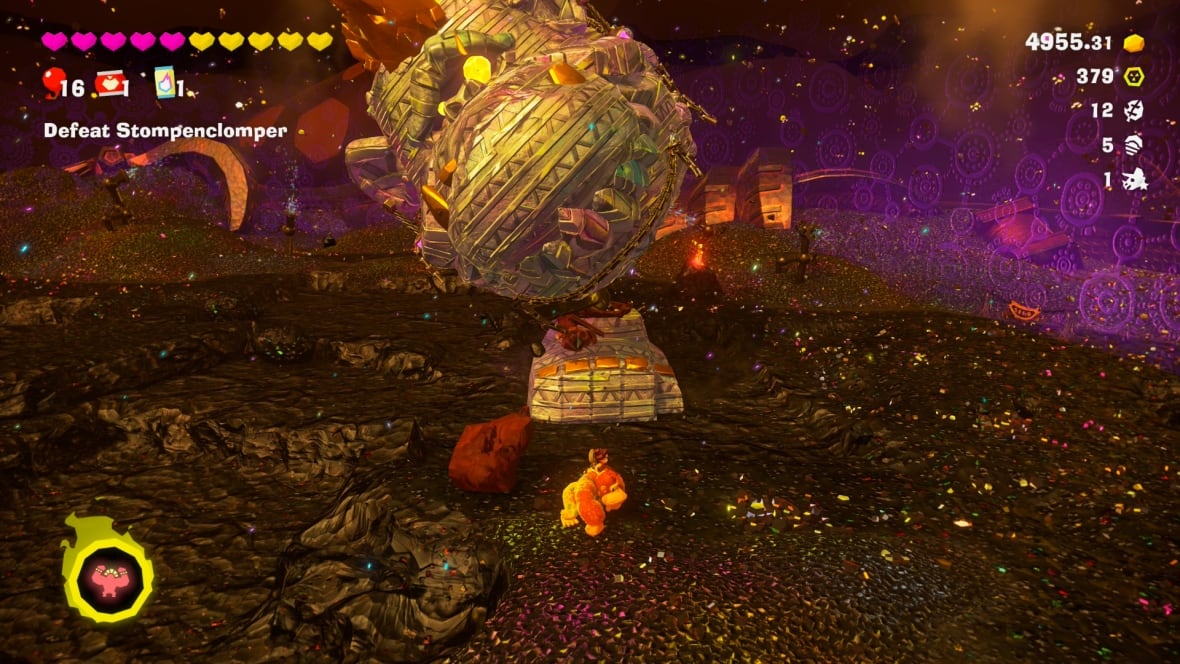
The cartoony denizens include the Fractones — creatures made of cerulean crystal with big, Pixar-like eyes — and a race of ostriches who run a five-star hotel inside a skyscraper-sized eggshell. (One note from the ostriches belies the script’s occasional profundity: ostriches can’t help but look down on others with their long legs, so must work extra hard to empathize with, and ultimately serve, their patrons.)
As worrying as its technical hitches are this early in the Switch 2’s life, Donkey Kong Bananza is a triumphant return for the titular gorilla. It’ll take players about 20 hours to reach the thunderously exhilarating final act, but they’ll likely have more than twice that spent just searching the underground world for more banana gems and other hidden treasures.
Provided you’ve already bought the pricey Switch 2 and can stomach the game’s $99.99 price tag, it’s not one to miss.
